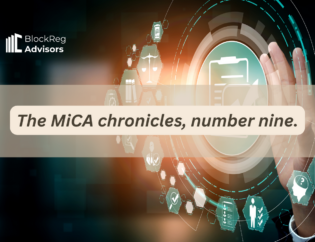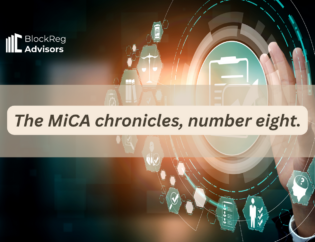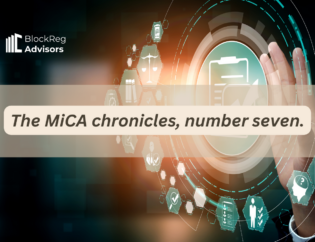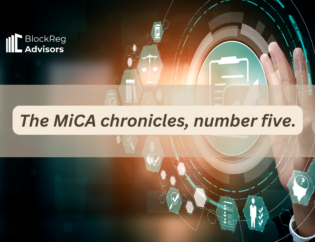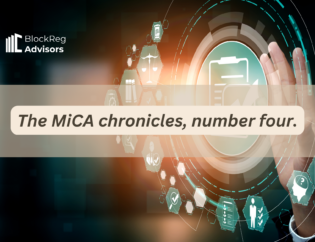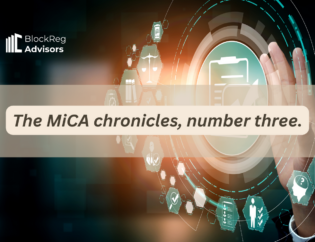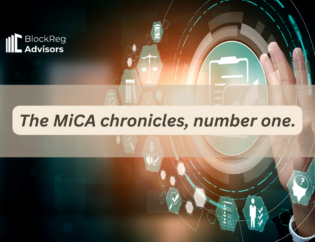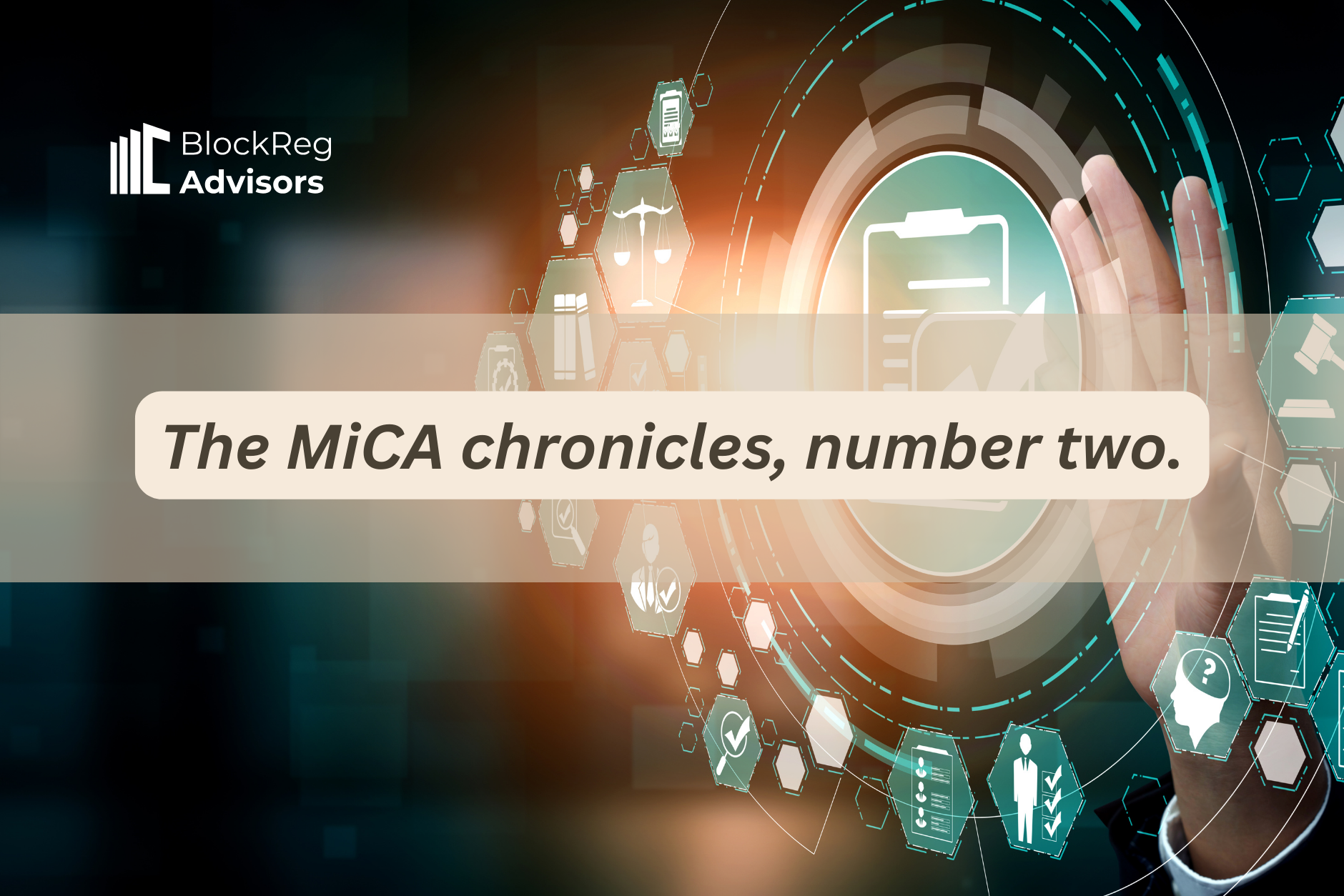

Representation, format, and fungibility: Tokenization under MiCA
Madonna used to sing that we live in a material world. The fact is that our lives are becoming more immaterial by the day. The way we interact one another, and the modes in which we produce, and industrialize things are growingly based in digital structures.
One of the most interesting elements of the current trends of digitalization is asset tokenization. Thanks to distributed ledger technology (DLT) and the rise of crypto assets, businesses are warming to the possibility of issuing tokens that are digital representations of real-world assets, or digital forms of property with a value of their own, with their ownership registered in public access and securely validated ledgers. The tokenization of assets can help monetize products, help with identity validation and settlement, facilitating the transfer of value and to further enhance the operationalization of digital forms of interaction, be them related to capital movements, property trading, or to the validation of personal information. Matter is thin, bytes are immense: let us live in a new, tokenized world.
For all the catchy, futuristic sound of it, tokenization is a very complex issue from a legal point of view. If it is true that it can open a new value economy, it is also true that it can lead to spectacular misunderstandings and confusions for consumers and businesses alike. In a general way, tokenization seems a form of transposing matter into the immaterial, of creating a new form of altered reality that, although different, will be (in functional terms) the same as the old one. But what does this mean? Let us consider the topic of tokenization and its meaning.
In general parlance, a token is a representation of something – a token of gratitude, say. The token is (figuratively speaking) an object, the value, function, or purpose of which is connected to another reality. Therefore, tokenization is the digital representation of another thing, in the form of a crypto asset.
A representation is never the original. A crypto asset that purports to represent, for example, a specific house, is not the house. Consequently, a representation is a form, autonomous from the original reality, that can be possessed and owned as such. The question is: for what purpose? Why do I want a representation of something, instead of having the real thing? What do I own when I own a token, besides the token itself?
A common trait in legal definitions of crypto assets or tokens is that these realities are “representations of value”. The value can be intrinsic, like Bitcoin, or external, like stablecoins. The value can also be connected to a function that the token can serve. But when we talk about tokenization, we are most of the time discussing the possibility of the token representing an asset, not figuratively, but legally. In other words, a token can be representation of rights or claims concerning the asset, such as ownership or usage.
A token can also be an asset in itself – in other words, it can be not a representation, but a format for the issuance of a value. Imagine a Central Bank Digital Currency – it is not representing a currency, it is currency. Or take a company that issues shares in a DLT system, or other bonds: these bonds continue to be bonds, and the shares continue to be shares, but their form(at) is that of token.
Tokenization, therefore, can be two things, with two different legal consequences. One is tokenization as representation, and the other is tokenization as format. For the former, a token is like a title, that is, it is something that proves one’s capacity to exercise a right vis-à-vis a specific reality. A property title over land proves the ownership of property, and consequently allows the owner to legitimately make use of such property. As for tokenization as a format, a token is merely a medium in which a reality is issued: the “value” it represents is connected to the issued reality, and not to the token itself.
It can be difficult, in practice, to make a clear division between representation and formatting, when assessing the value of the token. A share issued as a token is both a value in itself (the share) and the rights it represents (e.g., the right to dividends in the company that issued the share). Also, a token representing ownership rights of a property will, in principle, be more valuable than the property, because only by having the former can someone make legitimate (not effective) use of the property. But, in a cruder manner, representing something and being something are two different things, and I will not go deeper in this complex discussion because it can lead to philosophical enquiries that, in practice, are not worth more than a good 80s pop song.
In sum: a person entering the tokenization business will in principle want to either issue something in a token format or issue a token that represents rights over a specific reality.
How does MiCA regulate tokenization? MiCA’s focus is in regulating commercial activities related to crypto-assets, crucially among them issuance. Therefore, those who wish to enter the tokenization business must know what they wish to “tokenize”, to see if it falls under MiCA’s normative umbrella. They must also understand that MiCA only regulates the issuance of certain types of tokens – asset-referenced tokens (ARTs), e-money tokens (EMTs), and the broader criteria of crypto-assets that are neither one nor the other (let’s call them, for simplicity’s sake, “general tokens” or GTs). Within the latter category there are several types of tokens (that either represent the rights to a a substantive reality or serve merely as a format for such substantive reality: there does not seem to be any distinction between representation and formatting in MiCA) that are excluded from MiCA’s arms, as expressed in article 2(4) of the regulation. Among them are security tokens (that is: tokens that are or represent financial instruments) and non-fungible tokens (NFTS).
EMTs and ARTs, as discussed in the previous chapter of these MiCA chronicles, are tentative representations of the “stable” value of an external reality; in the case of the former, an official currency, and in the case of the latter, a value, right, or a combination of both or of several currencies. According to MiCA they both represent a claim on the issuer, in the amount of the stable value that the token wishes to represent. Read quickly, the ART definition may suggest that an ART represents a right or a value. That is not the case: an ART represents a stable value, referenced to the value of rights, currencies, or other forms of value, and not a right regarding something external to the token.
What about tokens that are not EMTs nor AMTs? GTs, as I called them above, are the third category, and a residual category. However, to consider what type of tokens fall under that category – and that, consequently, must follow MiCA’s rules on issuance and access to negotiation – it is necessary to know what type of tokens are excluded ex-ante from it. And the list is not small. First, MiCA does not regulate tokens that represent financial instruments, nor other instruments such as insurance products under article 2(4) MiCA. Second, MiCA does not regulate tokens that cannot be transferred. Third, MiCA does not regulate tokens that are freely offered or whose issuance is automatically programmed as a reward within a DLT consensus mechanism (e.g., tokens that are issued in staking procedures). Fourth, MiCA does not regulate “consumer” tokens, i.e., tokens that represent a right of access to an existing good or service, and to access existing good or services within a restricted network of merchants. Fifth, MiCA does not regulate tokens that are only accepted by the issuer or the offeror. Sixth, MiCA does not regulate tokens that are non-fungible.
It is important to note that the fungibility of a token, for MiCA, must be assessed in substance, that is: by considering the fungibility of the right or asset that is represented by an NFT. That means that if an NFT represents a commodity (say, gold) it is not fungible, and its issuance can be regulated under MiCA – there the question is to know if the issuance is to be regulated under the ART section (as representation of a stable value of a commodity) or under the GT section. Also, if an NFT is issued under such a large collection that, in practice, dilutes its uniqueness, or is extensively fractionated to the same effect, it is not considered non-fungible, and can fall under MiCA (if it does not fall under one of the many exceptions). However, if a token represents a right of ownership of a real estate property or of a car (which are examples of non-fungible realities) then that token is, in substance, a NFT, and its issuance is not regulated by MiCA.
Three conclusions can be taken from this digression. The first is that MiCA regulates certain types of tokenization, mostly tokenization in payment instruments. The second is that there are several interesting (and promising) cases of tokenization – in financial markets or in real estate markets – that are not regulated by it. The third is that only “real” NFTs (like “real” DeFi, whatever that is), which are tokens representing non-fungible assets, are outside the scope of MiCA; “fake” (highly fractionalized, or large collection) NFTs may fall under MiCA, unless, of course, they are considered financial instruments.
The question that remains is: what about GTs? What can be a token that is not an EMT, nor an ART, that is not under any of the exclusions, but still falls under MiCA’s rules of issuance? I would say, in abstract, that it is a token that is transferable, that can be accepted by people other than the issuer, that represents a fungible asset and that functions, for example, as some form of identity validation, or as a right that is not a right of access (what is access? Ownership, use, possession?) to a good nor a service, and used within an open (i.e., non-restricted) network. And, of course, that is not a security, nor an insurance product. A token that allows for participation in the consensus mechanism would fit the bill, although its access to governance features of a protocol may, depending on the specific arrangement of the DLT project (and access to dividends from the protocol) make it somewhat similar to shares.
But this is the thing that, for all the discussion on interpretation and the content of rules, shall only be solved by market practice, once businesses start applying to MiCA licenses to issue tokens or regulators start implementing the rules. Until then, we can only speculate, and test in abstract the different hypothesis. It is fun, but it will be funnier once the party actually starts.
Finally, and to be clear, MiCA is not the only legal framework on tokenization that matters – and given the limited normative ground of token regulation that it covers, perhaps it is not even the most important. The crucial framework, in my view, is the legal framework concerning the validation and settlement of property ownership and of securities. In other words: registries. There is a lot of interest in tokenizing real estate property and financial instruments, and much of the rules on registries are nationally-based. For example, in Portugal you can issue a token representing a house, but that token has no ownership value, since the rules for property transfer and property title require that ownership is registered in a public deed (a token would be but a private instrument, with no erga omnes effect). It is also unclear to what extent certain financial instruments, such as shares, can be issued as tokens.
While the DLT Pilot Regime, established by Regulation (EU) 2022/858 of the European Parliament and of the Council of 30 May 2022 on a pilot regime for market infrastructures based on distributed ledger technology, is a first step in proposing a harmonized solution for Member States, there is still not a lot done at EU level concerning the tokenization of property. Given the interest that is brewing in the market, perhaps we will be seeing solutions for this issue sooner, rather than later; perhaps, sooner rather than later, we will all be starting to move more quickly to a new, immaterial world, thanks to tokenization.
Note: This text is the sole work of the author and does not bind BlockReg Advisors Ltd. nor does it constitute legal advice. All rights reserved.
If you want to discuss these topics further do not hesitate in contacting our team at [email protected] and [email protected].
